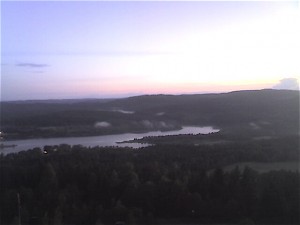Last week I met with the superintendents from school districts close to campus to discuss ways we might create a more mutually beneficial network of relationships. I was joined by Sonia Manjon, Wesleyan’s new Vice-President for Diversity and Strategic Partnerships. Although Sonia just began her tenure here in Middletown, we know one another well from our work at CCA’s Center for Art and Public Life. Sonia was largely responsible for building up a wide array of community partnerships that linked California College of the Arts with community organizations, schools and artists’ groups around the Bay Area. She helped the faculty create many service learning courses and developed new undergraduate and graduate degree programs in Community Arts. At the same time, she has been an active participant nationally in the emerging field of community arts. I am delighted that the Wesleyan community will benefit from Sonia’s leadership and collaborative abilities. For more about Sonia, see: http://www.wesleyan.edu/newsletter/campus/2008/0208manjon.html
Our meeting with the superintendents surveyed some of the projects on which Wesleyan students have been working for many years. For example, Community and University Services for Education (CAUSE) has benefited thousands of high school students from the surrounding area who come to campus for lectures, seminars, films and art exhibitions. The High School Scholars Programs offer academically well-prepared juniors and seniors from local schools the opportunity to enroll in Wesleyan courses. We waive tuition for students for one course per semester, enabling them to get a head start on their college work.
Since 1966 the Upward Bound Program at Wesleyan has helped place high school students on the path toward a successful college education. From specific classes, to more general financial aid and career counseling, our Upward Bound Program has made a positive difference in the lives of teenagers in Middletown, Meriden and Portland.
Although I didn’t know the term “community service” in 1975, in my first year at Wesleyan I volunteered in the psychiatry ward at Middlesex Hospital and tutored an elementary school student in reading. I was joining a team that is still going strong today. Through the Office of Community Service and Volunteerism Wes students are lending a hand in schools, medical centers, community housing, music centers and in prisons – just to name a few of the places where they can be found.
In addition to our work with young people making their way to college, we are also interested in helping students discover how they can continue their education at an advanced level. Professor Laurel Appel is leading Wesleyan’s McNair Program, which assists students from underrepresented groups in preparing for post-graduate education. The program provides guidance, research opportunities, and academic and financial support to students planning to go on to Ph.Ds. We hope our McNair participants will one day be encouraging their own students to participate in university-community partnerships.
Not all our community programs are classroom based. Wesleyan’s Green Street Art Center offers a wide array of activities, including dance, filmmaking, poetry and music. Check out the website at: http://www.wesleyan.edu/greenstreet/events.html
With the support and cooperation of local and state organizations, Wesleyan has been offering a free film series on Ingrid Bergman and her leading men. We have collected Ms. Bergman’s personal and professional materials at our Film Archive, and we have played some of her great films to full houses. This week I will introduce Gaslight, Bergman’s 1944 classic with Charles Boyer. It’s a pleasure to welcome our friends and neighbors to the glorious new Center for Film Studies. In a small way with this film series we help build better town gown relations while reminding all of us of the gems in our archival holdings. Gaslight will be shown at 8:00 pm on Wed., July 23. The following week the series concludes with The Bells of Saint Mary’s. For more information: http://www.wesleyan.edu/filmstudies/center.html
[tags] Sonia Manjon, Diversity and Strategic Partnerships, CAUSE, Upward Bound,Office of Community Service and Volunteerism, Laurel Appel, McNair Program, Green Street Arts Center, Ingrid Bergman, film series [/tags]




